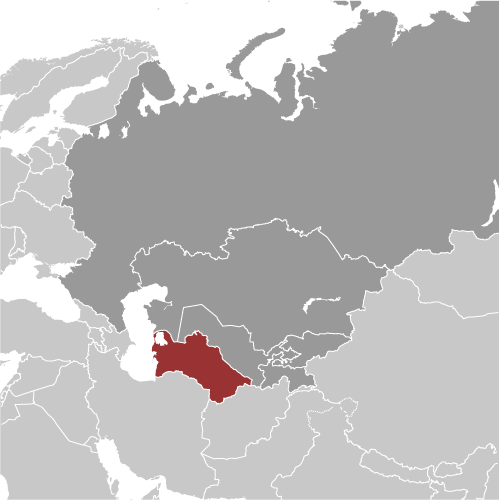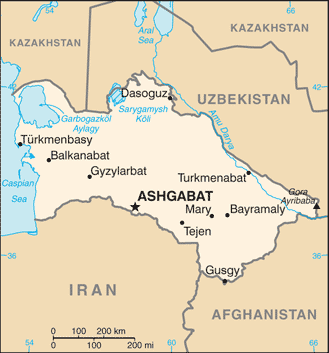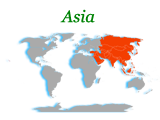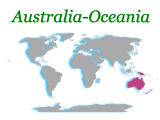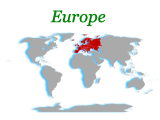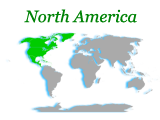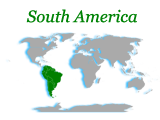Eastern Turkmenistan for centuries formed part of the Persian province of Khurasan; in medieval times Merv (today known as Mary) was one of the great cities of the Islamic world and an important stop on the Silk Road. Annexed by Russia between 1865 and 1885, Turkmenistan became a Soviet republic in 1924. It achieved independence upon the dissolution of the USSR in 1991. Extensive hydrocarbon/natural gas reserves could prove a boon to this underdeveloped country if extraction and delivery projects were to be expanded. The Turkmenistan Government is actively seeking to diversify its gas export routes beyond the existing Russian pipeline network. President for Life Saparmurat NYYAZOW died in December 2006, and Turkmenistan held its first multi-candidate presidential electoral process in February 2007. Gurbanguly BERDIMUHAMEDOW, a vice premier under NYYAZOW, emerged as the country's new president.
Population
4,940,916 (July 2010 est.)
Country comparison to the world:115
Nationality
Noun:Turkmen(s)
Adjective:Turkmen
Ethnic groups
Turkmen 85%, Uzbek 5%, Russian 4%, other 6% (2003)
Religions
Muslim 89%, Eastern Orthodox 9%, unknown 2%
Languages
Turkmen (official) 72%, Russian 12%, Uzbek 9%, other 7%
Country Name
Conventional long form:none
Conventional short form:Turkmenistan
Local long form:none
Local short form:Turkmenistan
Former:Turkmen Soviet Socialist Republic
Government Type
defines itself as a secular democracy and a presidential republic; in actuality displays authoritarian presidential rule, with power concentrated within the executive branch
Capital
Name:Ashgabat (Ashkhabad)
Geographic coordinates:37 57 N, 58 23 E
Time difference:UTC+5 (10 hours ahead of Washington, DC during Standard Time)
Administrative divisions
5 provinces (welayatlar, singular - welayat) and 1 independent city*: Ahal Welayaty (Anew), Ashgabat*, Balkan Welayaty (Balkanabat), Dashoguz Welayaty, Lebap Welayaty (Turkmenabat), Mary Welayaty
note: administrative divisions have the same names as their administrative centers (exceptions have the administrative center name following in parentheses)
Independence
27 October 1991 (from the Soviet Union)
National Holiday
Independence Day, 27 October (1991)
Constitution
adopted 26 September 2008
Legal system
transitioning to civil law system and influenced by Islamic law tradition; has not accepted compulsory ICJ jurisdiction
Suffrage
18 years of age; universal
Executive branch
Chief of state:President Gurbanguly BERDIMUHAMEDOW (since 14 February 2007); note - the president is both the chief of state and head of government
Head of government:President Gurbanguly BERDIMUHAMEDOW (since 14 February 2007)
Cabinet:Cabinet of Ministers appointed by the president
(For more information visit the World Leaders website)
Elections:president elected by popular vote for a five-year term; election last held on 11 February 2007 (next to be held in February 2012)
Election results:Gurbanguly BERDIMUHAMEDOW elected president; percent of vote - Gurbanguly BERDIMUHAMEDOW 89.2%, Amanyaz ATAJYKOW 3.2%, other candidates 7.6%
Legislative branch
unicameral parliament known as the National Assembly (Mejlis) (125 seats; members elected by popular vote to serve five-year terms)
Elections:last held on 14 December 2008 (next to be held in December 2013)
Election results:100% of elected officials are members of either the Democratic Party of Turkmenistan or its pseudo-civil society parent organization, the Revival Movement, and are preapproved by the president
note: in 26 September 2008, a new constitution of Turkmenistan abolished a second, 2,507-member legislative body known as the People's Council and expanded the number of deputies in the National Assembly from 65 to 125; the powers formerly held by the People's Council were divided up between the president and the National Assembly
Judicial branch
Supreme Court (judges are appointed by the president)
Political Parties and Leaders
Democratic Party of Turkmenistan or DPT [Gurbanguly BERDIMUHAMEDOW]
note: formal opposition parties are outlawed; unofficial, small opposition movements exist abroad; the three most prominent opposition groups-in-exile are the National Democratic Movement of Turkmenistan (NDMT), the Republican Party of Turkmenistan, and the Watan (Fatherland) Party; the NDMT was led by former Foreign Minister Boris SHIKHMURADOV until his arrest and imprisonment in the wake of the 25 November 2002 attack on President NYYAZOW's motorcade
Political pressure groups and leaders
none
International organization participation
ADB, CIS (associate); note - has not ratified the 1993 CIS charter although it participates in the meetings, EAPC, EBRD, ECO, FAO, G-77, IBRD, ICAO, ICRM, IDA, IDB, IFC, IFRCS, ILO, IMF, IMO, Interpol, IOC, IOM (observer), ISO (correspondent), ITU, MIGA, NAM, OIC, OPCW, OSCE, PFP, UN, UNCTAD, UNESCO, UNIDO, UNWTO, UPU, WCO, WFTU, WHO, WIPO, WMO
Diplomatic representation in the US
Chief of mission:Ambassador Meret Bairamovich ORAZOW
Chancery:2207 Massachusetts Avenue NW, Washington, DC 20008
Telephone:[1] (202) 588-1500
FAX:[1] (202) 588-0697
Diplomatic representation from the US
Chief of mission:Ambassador (vacant); Charge d'Affaires Sylvia Reed CURRAN
Embassy:No. 9 1984 Street (formerly Pushkin Street), Ashgabat, Turkmenistan 744000
Mailing address:7070 Ashgabat Place, Washington, DC 20521-7070
Telephone:[993] (12) 35-00-45
FAX:[993] (12) 39-26-14
Flag description
green field with a vertical red stripe near the hoist side, containing five tribal guls (designs used in producing carpets) stacked above two crossed olive branches; five white stars and a white crescent moon appear in the upper corner of the field just to the fly side of the red stripe; the green color and crescent moon represent Islam, the five stars symbolize the regions or welayats of Turkmenistan

